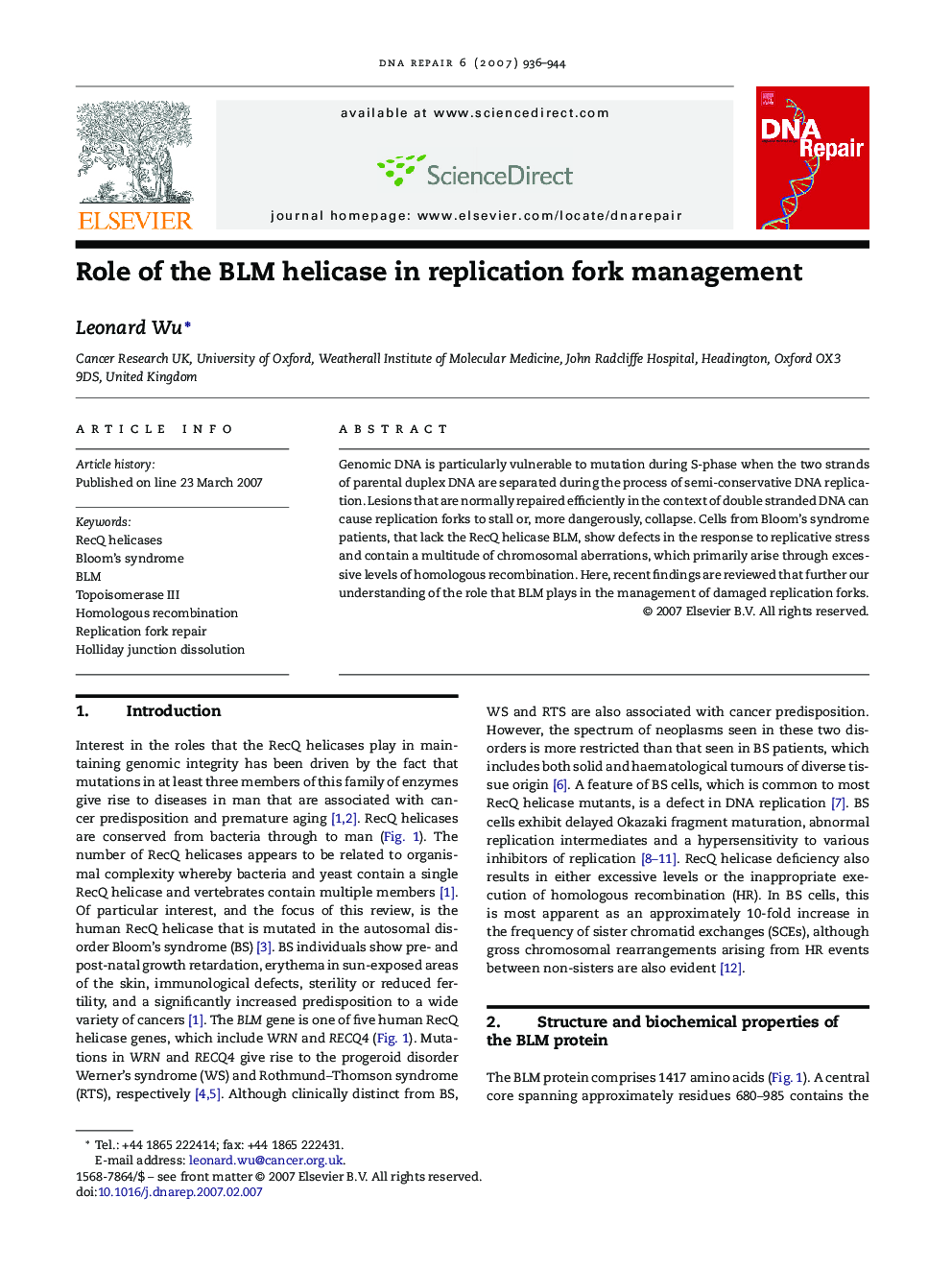| Article ID | Journal | Published Year | Pages | File Type |
|---|---|---|---|---|
| 1980987 | DNA Repair | 2007 | 9 Pages |
Abstract
Genomic DNA is particularly vulnerable to mutation during S-phase when the two strands of parental duplex DNA are separated during the process of semi-conservative DNA replication. Lesions that are normally repaired efficiently in the context of double stranded DNA can cause replication forks to stall or, more dangerously, collapse. Cells from Bloom's syndrome patients, that lack the RecQ helicase BLM, show defects in the response to replicative stress and contain a multitude of chromosomal aberrations, which primarily arise through excessive levels of homologous recombination. Here, recent findings are reviewed that further our understanding of the role that BLM plays in the management of damaged replication forks.
Related Topics
Life Sciences
Biochemistry, Genetics and Molecular Biology
Biochemistry
Authors
Leonard Wu,
